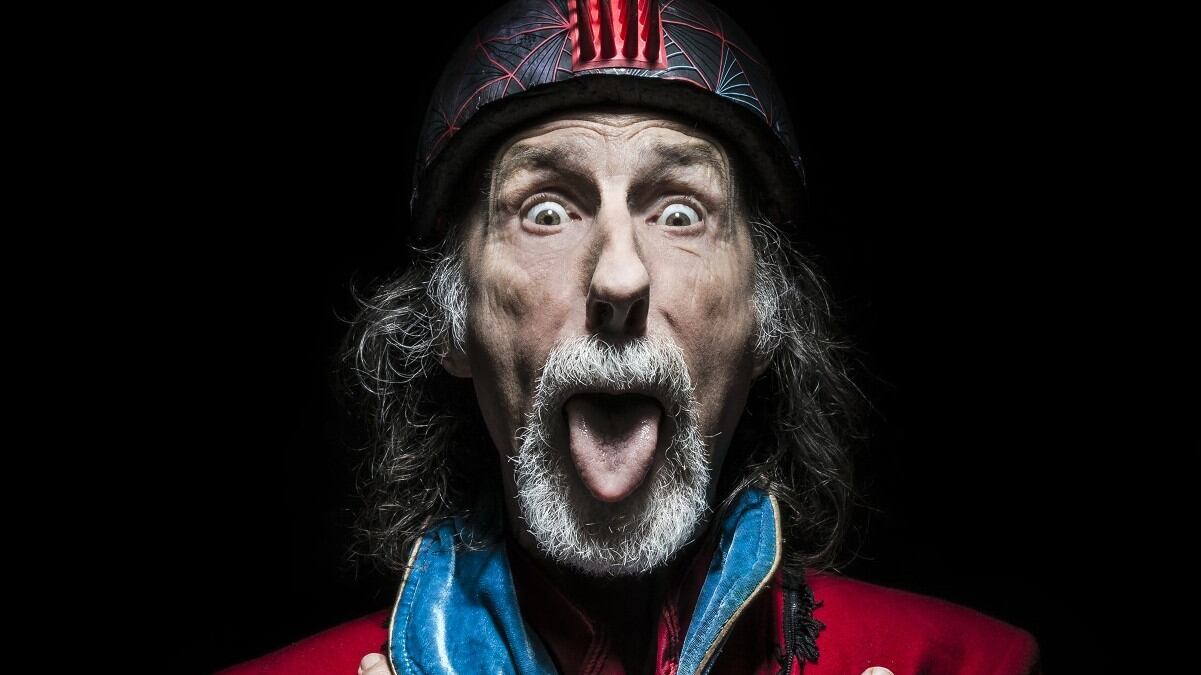As the cliché goes, innovators are often ignored in their time. But Arthur Brown's problem wasn't getting people to notice him. After all, it's hard to ignore a singer with a four-octave vocal range screaming, "I am the god of hellfire!" while wearing demonic makeup and a helmet that shoots flames out of the top. His mistake was doing it back in the 1960s. At the height of flower power, Brown attempted to bring gonzo stagecraft to rock 'n' roll. Reactions were, let's say, mixed.
"It varied from appreciation and applause to promoters throwing our equipment down stairs," says Brown, now 74. "A lot of people found it quite shocking."
The sight of a mad Englishman dressed like a satanic Bic lighter would hardly cause modern audiences to look up from their phones. But if kids today aren't so easily shocked, it's because the ideas Brown introduced to outrage decades ago have, over time, become standard practice. Whether it's Alice Cooper holding public executions onstage or Lady Gaga "diving" off the top of a sports arena, much of the spectacle we now expect from pop performance can be traced back to Brown and his most notorious outfit, the Crazy World of Arthur Brown.
So far, though, that hasn't led to a widespread rediscovery of Brown himself. He hasn't toured the United States since 1969; he's only returning now, he says, because someone finally invited him back. His influence is undeniable—it's literally painted on the faces of Kiss, King Diamond and every black-metal fan in Scandinavia—but if the wider music world remembers him at all, it's for his lone hit, the psychedelic groover "Fire." Many musicians would grow bitter watching other artists get rich doing the same things that once got them attacked by angry concert promoters. But Brown insists he's never felt cheated. "I just loved performing," he says.
He acknowledges, however, that time was never really on his side. Aside from assuming a willfully outlandish stage persona in the era of hippie earnestness, Brown's complex stew of psych rock, prog and R&B was perhaps too hard to classify in a time when music was less eclectic. Expanding on the antics of one of his own inspirations, Screamin' Jay Hawkins, the theatrical aspects of Crazy World—the corpse paint, the costumes and his most infamous accoutrement, the flaming helmet—developed, in part, as a way of visualizing the heady lyrical concepts Brown feared were being lost on the audience. It earned the band a cult following, and influential admirers such as Pete Townshend, who's credited as an associate producer on the group's lone album, 1968's The Crazy World of Arthur Brown. In retrospect, though, it was all too much to sustain.
"We started out as an improvising band," Brown says, "and as it got more successful and the costumes got more elaborate, it lost a lot."
After Crazy World dissolved, Brown formed Kingdom Come, which introduced the drum machine to rock. He continued to release solo albums and collaborative projects before reforming Crazy World in 2000. But he hasn't stopped trying to innovate. In the past few years, Brown has worked to develop another unique piece of headgear—the "brain hat helmet," which he claims will allow musicians to create songs using only their thoughts.
Laugh now. But in 40 years, don't be surprised if Brown ends up being responsible for a lot of how we perceive popular music. It's happened before.
SEE IT: The Crazy World of Arthur Brown plays Star Theater, 13 NW 6th Ave., with Danava, Electric Citizen and DJ JD Star, on Saturday, Feb. 18. 8 pm. $25. 21+.
